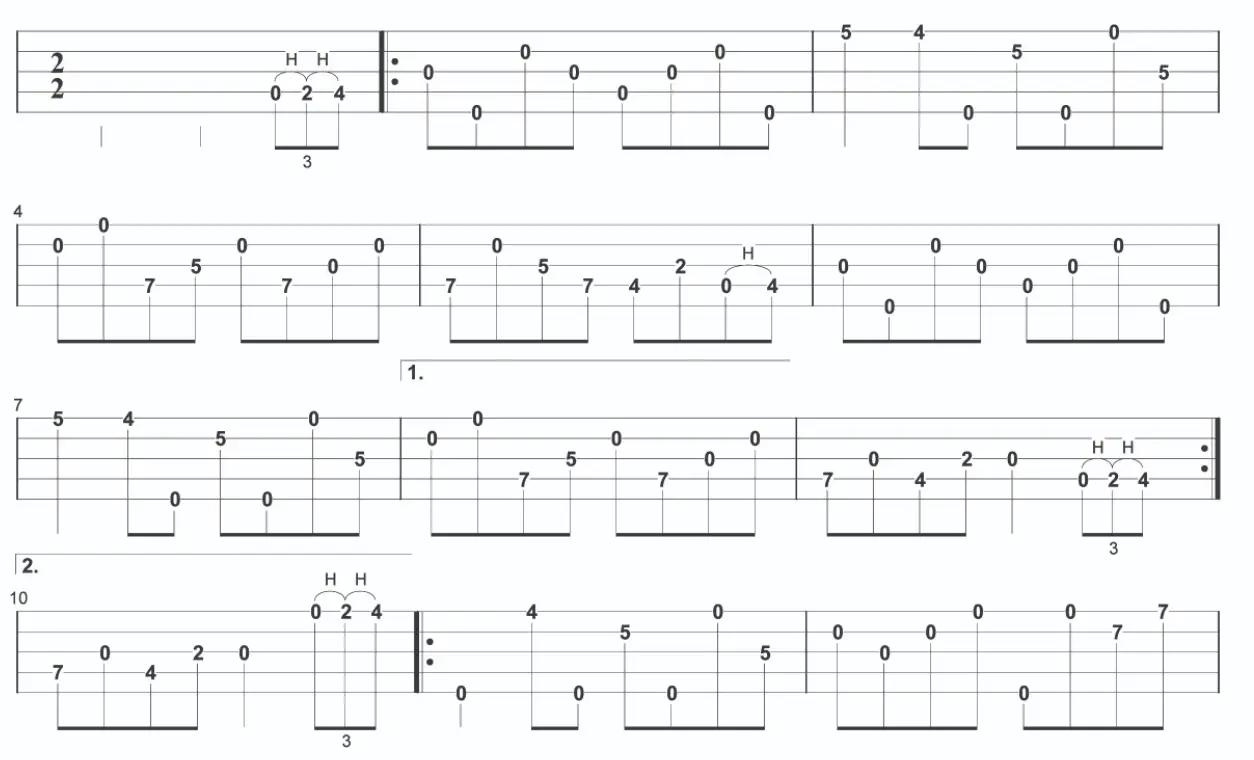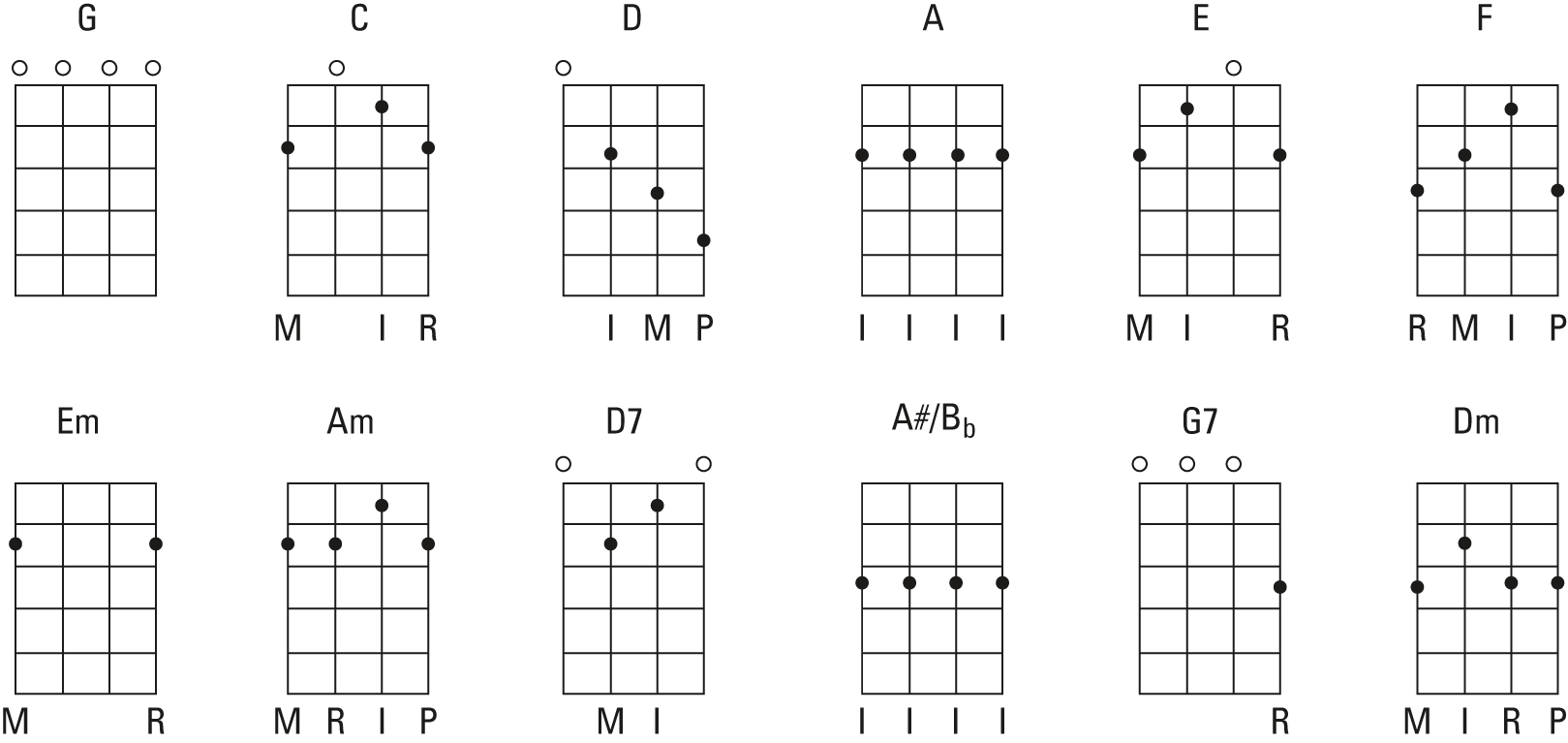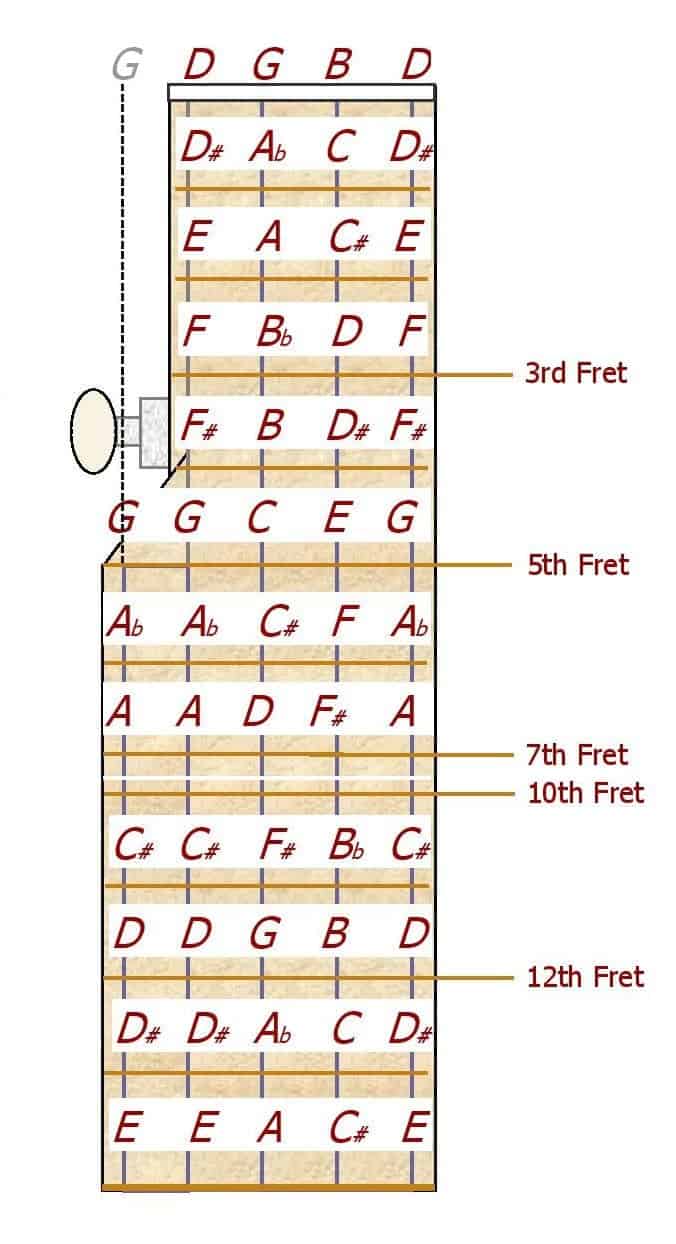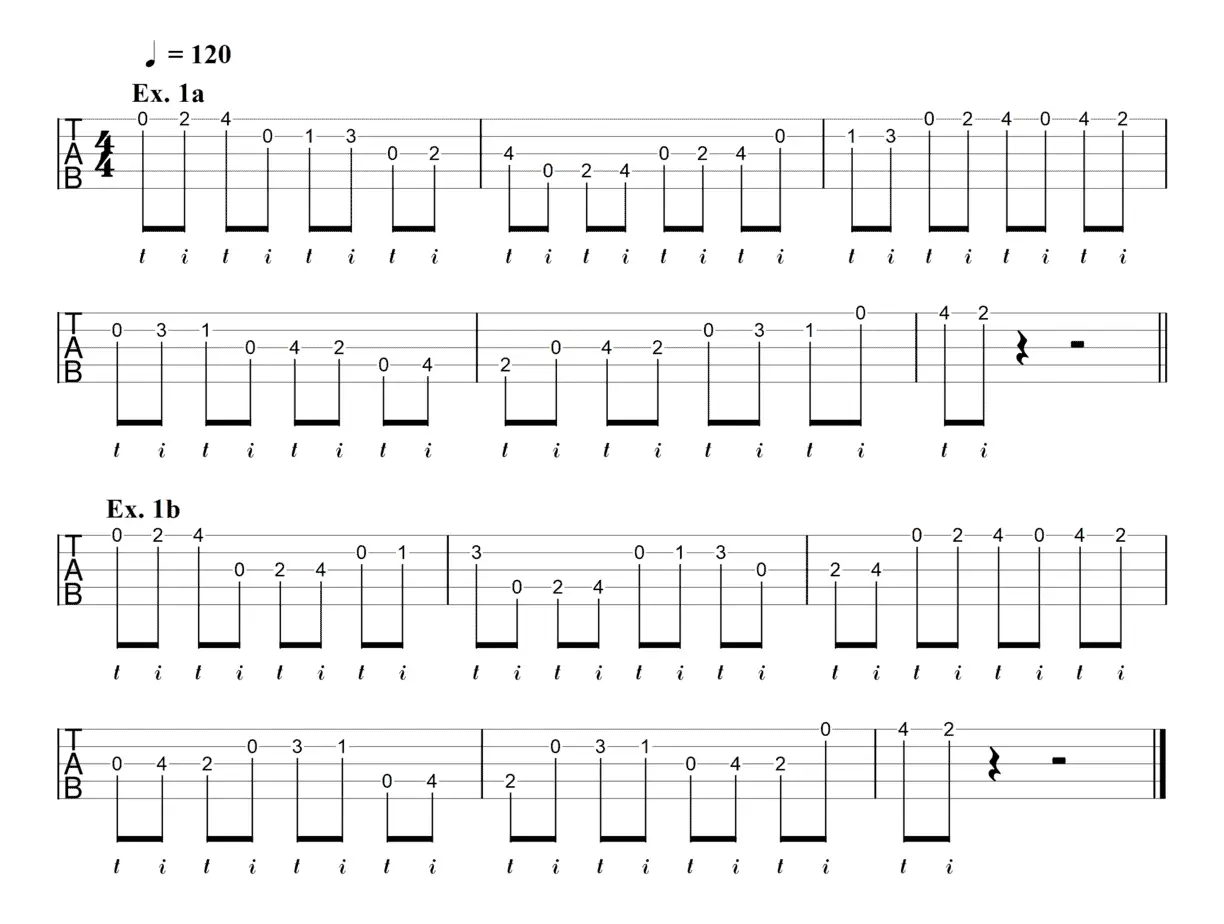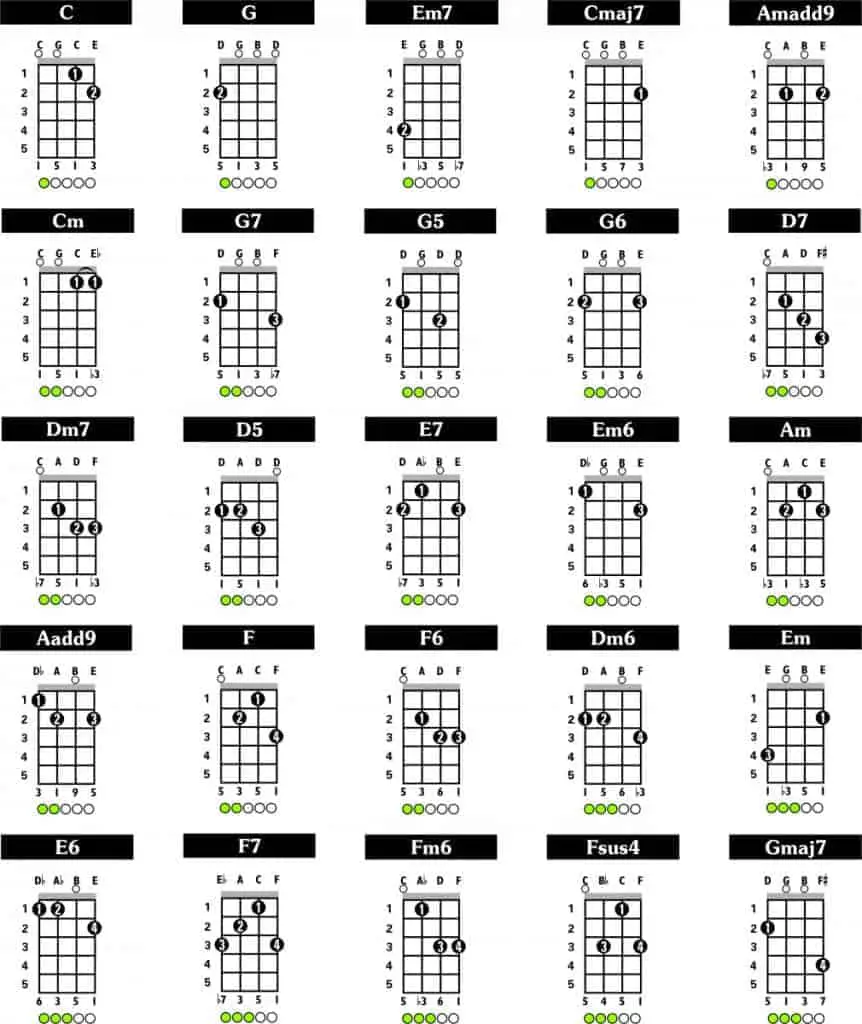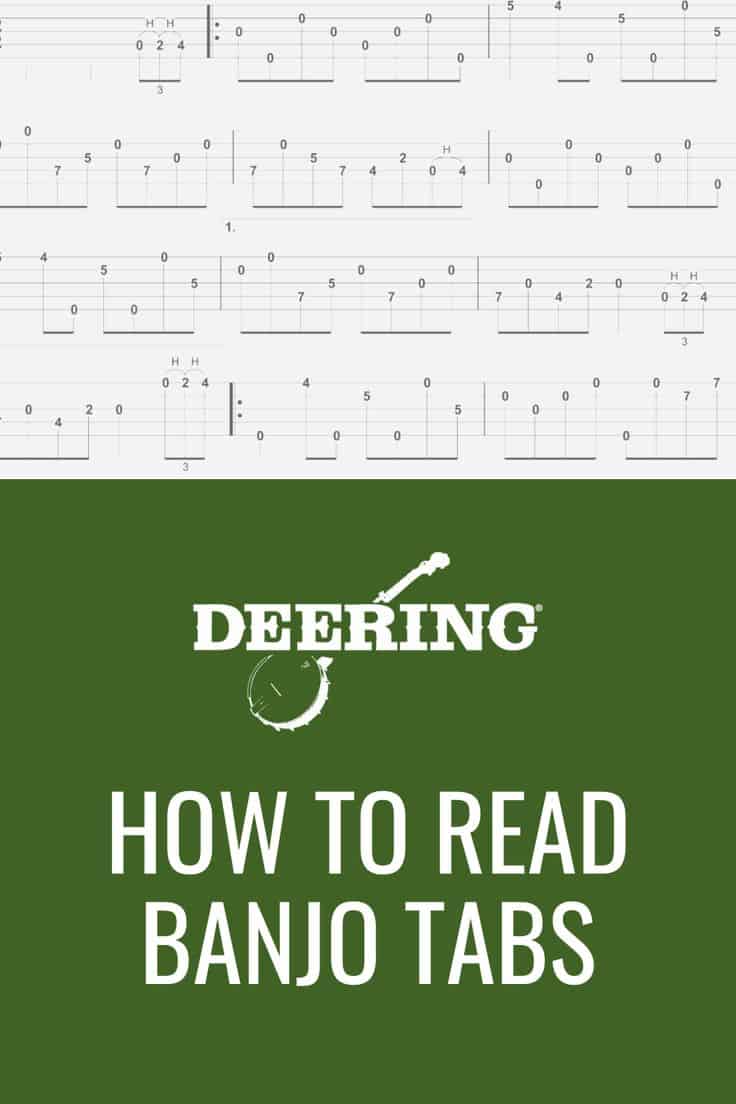As someone just starting out on the banjo, understanding how to read banjo tabs can be a daunting task. When I first picked up the instrument, I was overwhelmed by the amount of information I didn’t understand. In this article, I’ll provide an essential guide on how to read banjo tabs for beginners. I’ll explain the basics of how banjo tabs work, how to interpret the symbols used, and how to use them to learn banjo songs. By the end of this article, you’ll have a better understanding of how to read banjo tabs and be able to use them to learn songs on your own.
What are Banjo Tabs?
Banjo tabs are a type of musical notation used to notate music that is specifically written for the banjo. The tabs, which are sometimes referred to as tablature, are written on a grid that is divided into horizontal lines and columns. Each line and column represent specific notes and chords on the banjo. The notes and chords are written out in a simplified form that is easy to read and understand.
| Tab | Notes |
|---|---|
| |–0–2–4–| | G Major Scale |
| |–x–x–x–| | G Major Chord |
| |–3–2–0–| | C Major Chord |
In the above example, the first row of the table is a tab for a G major scale. The second row of the table is a tab for a G major chord. The third row of the table is a tab for a C major chord.
Banjo tabs are an excellent way to learn the banjo and can be used to play any song or genre. It is easy to write and read, and can be used to quickly learn the basics of the instrument.
Basic Tab Symbols
| Symbol | Meaning |
|---|---|
| | | Bar line |
| – | Note or rest |
| O | Open string |
| X | Muted string |
| / | Slide up |
| \ | Slide down |
| h | Hammer on |
| p | Pull off |
Tab notation is a simple form of musical notation that is used to notate banjo music. It is written as a series of lines, each of which represents a string on the banjo. Notes and rests on the banjo are represented with symbols on the tab lines. There are several basic tab symbols that are used to notate banjo music. The bar line is represented by a vertical line, while notes and rests are represented by a dash. Open strings are represented by an “O”, and muted strings are represented by an “X”. Slides are represented by a forward slash (/) for sliding up and a backslash (\) for sliding down. Hammer-ons are represented by an “h”, and pull-offs are represented by a “p”.
Common Time Signatures for Banjo Tabs
Banjo tabs typically use a variety of time signatures, depending on the type of music. The most common time signatures used in banjo tabs are 4/4, 3/4, 2/4, 6/8, and 12/8.
| Time Signature | Count |
|---|---|
| 4/4 | 1, 2, 3, 4 |
| 3/4 | 1, 2, 3 |
| 2/4 | 1, 2 |
| 6/8 | 1, 2, 3, 4, 5, 6 |
| 12/8 | 1, 2, 3, 4, 5, 6, 7, 8, 9, 10, 11, 12 |
4/4 is the most common time signature and is regularly found in many styles of music including bluegrass, jazz, and rock. This time signature is sometimes referred to as “common time” or “four-four time” and is used for songs with a steady beat.
3/4 is also commonly used in banjo tabs and is often used for waltzes, polkas, and other slow-paced music.
2/4 is a very simple time signature that is often used for polkas, marches, and other short tunes.
6/8 is used for songs with a more syncopated feel and is often found in ragtime, blues, and other upbeat music.
12/8 is used for slow-paced blues and gospel music. It gives the music a “laid-back” feel and is sometimes referred to as “shuffle time.”
Enharmonic Notes in Banjo Tabs
Banjo tabs, or tablature, are a simple way of notating music on the banjo. Notes are represented by numbers on the lines of the tab, with each line representing a string on the banjo. These notes are written in standard notation, meaning each note is assigned a letter and a number. However, some notes can be written in more than one way. These are called enharmonic notes, and they are just as important to understand when reading banjo tabs.
Enharmonic notes are notes that sound the same, but are written differently. For example, the notes C-sharp and D-flat are enharmonic. They are both the same pitch, but they are written differently. On the banjo, enharmonic notes are particularly important to understand, as some notes can be played in more than one place.
When reading banjo tabs, it is important to look out for enharmonic notes. The tablature may not always make it clear which note is being played. For example, a note may be written as a D-flat but actually be played as a C-sharp. It is important to be aware of the possible enharmonic notes for each note on the banjo. This knowledge will help you to understand the tablature better and be able to play songs accurately.
Enharmonic notes can also be used to create interesting sounds. For example, a G-sharp can be played as an A-flat for a unique sound. This is a great way to experiment with different notes and create a unique sound.
In summary, enharmonic notes are important to understand when reading banjo tabs. Knowing which notes are enharmonic will help you to understand the tablature better and make sure you are playing the song accurately. Enharmonic notes can also be used to create interesting sounds and experiment with different notes.
How to Read Multiple Notes
Banjo tabs use single notes to represent each string and fret on the instrument. When multiple notes are required to be played at once, they are usually grouped together in a tablature format. This means the multiple notes will be placed in the same row, one above the other.
| String & Fret | Tab |
|---|---|
| 1st string – 2nd fret | X |
| 2nd string – 0th fret | O |
| 3rd string – 4th fret | X |
In this example, multiple notes are being played simultaneously. This is known as a “chord”. When reading multiple notes, pay attention to the strings and frets indicated. The tab shows X on the first and third strings, meaning the second fret and fourth fret respectively. At the same time, the tab also shows an O on the second string, meaning the 0th fret. All these notes need to be played together to make the chord.
It is important to remember that the tablature only gives the order of the notes and their relative position on the instrument. It does not indicate the timing or duration of the notes. That is something you will need to learn from the audio track.
How to Play Barre Chords
Barre chords are an essential part of playing the banjo, and are frequently found in banjo tabs. Barre chords require you to use your index finger to press down multiple strings at the same time.
| Chord Type | Finger Placement |
|---|---|
| Major Barre Chord | Index finger across all strings at 2nd fret |
| Minor Barre Chord | Index finger across all strings at 1st fret |
| 7th Barre Chord | Index finger across all strings at 3rd fret |
To play barre chords, you’ll need to adjust the frets on the banjo to match the chords. Place your index finger across all the strings at the specified fret (according to the table above) and use your other fingers to press down the other strings. You’ll need to make sure that your index finger is firmly pressing down the strings, but not too hard that it causes the strings to buzz.
Once you have your index finger pressed down, use your other fingers to press down the strings at the frets indicated in the tab. Make sure to press down firmly, but not too hard, to ensure a good sound.
You may need to adjust the strings and frets a few times before you get the desired sound. Once you have the sound you want, you can then move up and down the fretboard using the same finger placement.
Barre chords can be challenging to master, but with some practice, you’ll be able to play them with ease.
Good luck!
Reading Hammer-ons and Pull-offs
When reading a banjo tab, you may come across hammer-ons and pull-offs (also known as slurs). These techniques are used to make the sound of the banjo smoother and more connected. Hammer-ons are indicated by an “h” and pull-offs are indicated by a “p”. The numbers below the h and p indicate the fret numbers to be used.
| Type | Symbol |
|---|---|
| Hammer-on | h |
| Pull-off | p |
For example, a tab with the notation “2h3” would mean that the player should play the second fret, then hammer-on the third fret without picking. Similarly, a tab with the notation “3p2” would mean that the player should play the third fret, then pull-off to the second fret without picking.
Hammer-ons and pull-offs can be used together to create a smooth, connected sound. A tab with the notation “2h3p2” would mean that the player should play the second fret, hammer-on the third fret, then pull-off to the second fret without picking.
By using hammer-ons and pull-offs, you can create a more fluid and expressive sound on the banjo. With practice, you can use these techniques to create unique and interesting solos.
Reading Slides and Bends
Slides and bends involve the way you play a certain note. A slide is when you start with a lower note and glide up to the higher note. This is indicated by a curved line connecting the two notes. A bend is when you start with a higher note and lower it to the lower note. This is indicated by an upward arrow connecting the two notes.
| Symbol | Meaning |
| Curved line | Slide from lower to higher note |
| Upward arrow | Bend from higher to lower note |
When playing a slide or a bend, you should use your left hand to make the transition from one note to another. This can be done by using your index, middle, and ring finger to fret the notes.
Frequently Asked Questions
What is the difference between reading banjo tabs and reading banjo sheet music?
Banjo tabs are a form of musical notation that use numbers and symbols to represent the strings of the instrument and the frets that should be played. They are great for quickly learning how to play a song, as they are easy to read and understand. Banjo sheet music, on the other hand, is written in standard notation, using notes and rests to dictate the duration of each note. Sheet music is more precise, but requires more knowledge of musical notation to read it.
What are the basics of Reading Tabs for Playing the Banjo?
Reading tabs for playing the banjo is an essential skill for any aspiring banjo player. Tablature, or “tabs”, are a type of musical notation that uses numbers, lines, and symbols to indicate which strings and frets should be played. To get started reading tabs, familiarize yourself with the notation and symbols used on the tab. Generally, the strings are numbered 1-5 from the bottom string to the top string. The frets are indicated by numbers, and the notes are represented by symbols. You’ll also need to know some basic music theory to make sense of the tabs. Once you’ve mastered the basics, you’ll be able to play your favorite songs with ease.
How can I learn to read music for playing the banjo?
Learning to read music for playing the banjo requires some basic knowledge of music theory, such as recognizing notes and their values. A good starting place is to learn the treble clef and basic musical notation, including note values, rest values, and time signatures. Once these fundamentals are understood, it is important to familiarize oneself with banjo tablature, which is a form of musical notation designed specifically for the instrument. With practice and patience, it is possible to learn to read banjo music.
What symbols and techniques should I look out for when reading banjo tabs?
Banjo tabs use symbols to indicate the strings and frets used to play the notes. When reading tabs, look out for the number signs indicating the strings and the letters and numbers indicating the frets. Additionally, some tabs may include techniques like slides, hammer-ons and pull-offs, and other techniques specific to banjo playing. Make sure to familiarize yourself with these symbols and techniques in order to properly interpret the tabs.
How can I practice reading banjo tabs and sheet music?
Start by understanding the notation used in banjo tabs and sheet music. Once you have a basic understanding of the notation, practice by playing simple songs. As you become more comfortable with reading the notation, move onto more complex songs. Focus on accuracy and timing as you play, as this will help you become a better reader of banjo tabs and sheet music. Additionally, consider taking lessons from an experienced banjo player to help you understand the notation and get better at reading it.
Conclusion
Banjo tabs are a great way to learn how to play the banjo. With practice and dedication, you can use them to learn a variety of banjo songs. To get the most out of your banjo tabs, understand the basics of reading them, including the notation for notes and chords, and practice reading them with a metronome. With practice, you’ll be playing banjo songs in no time.

